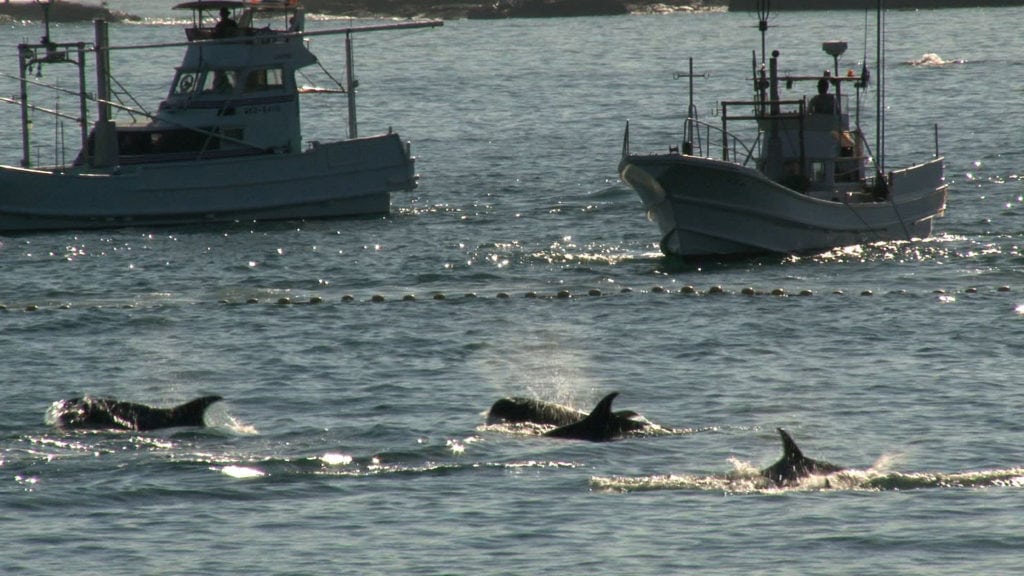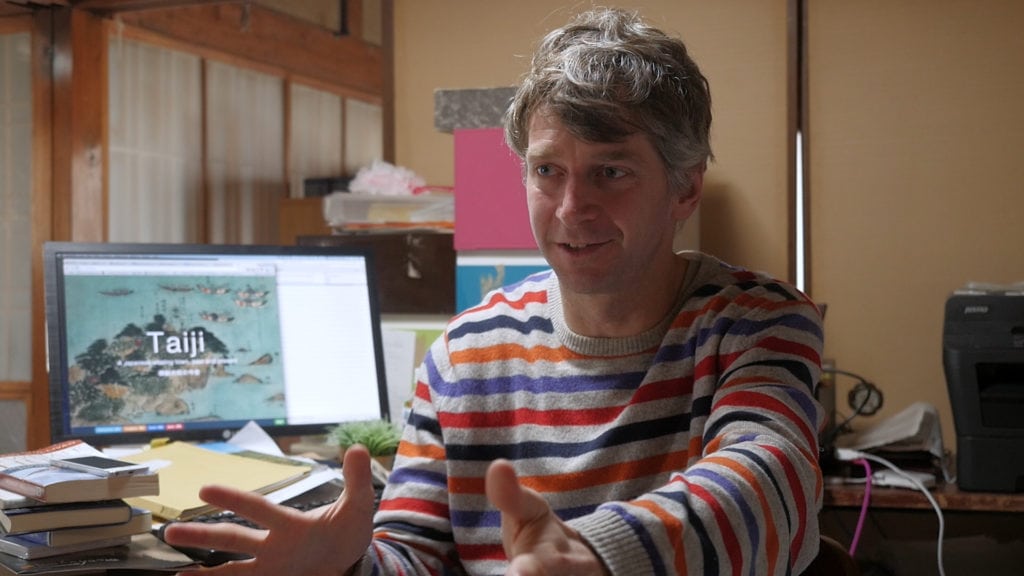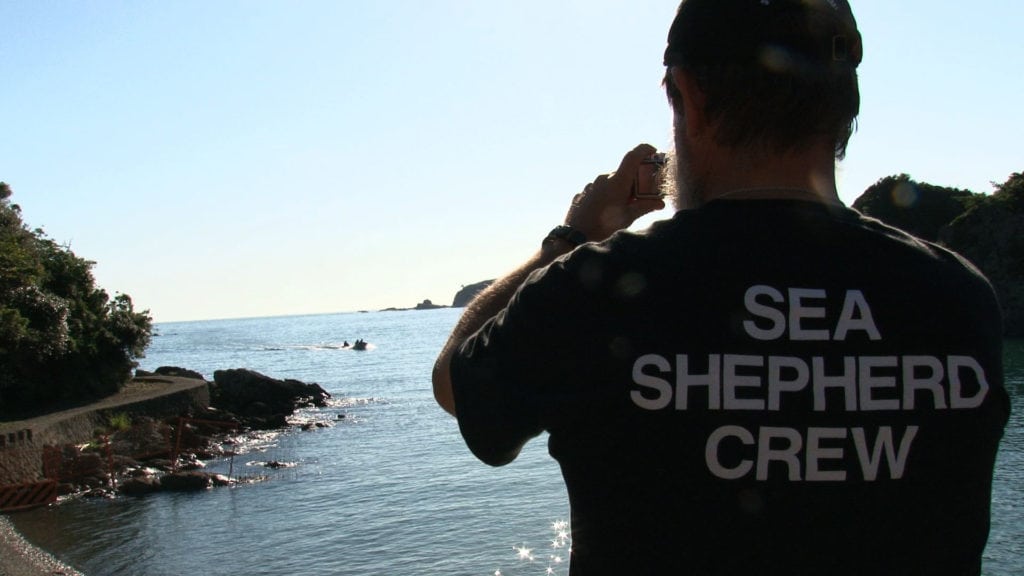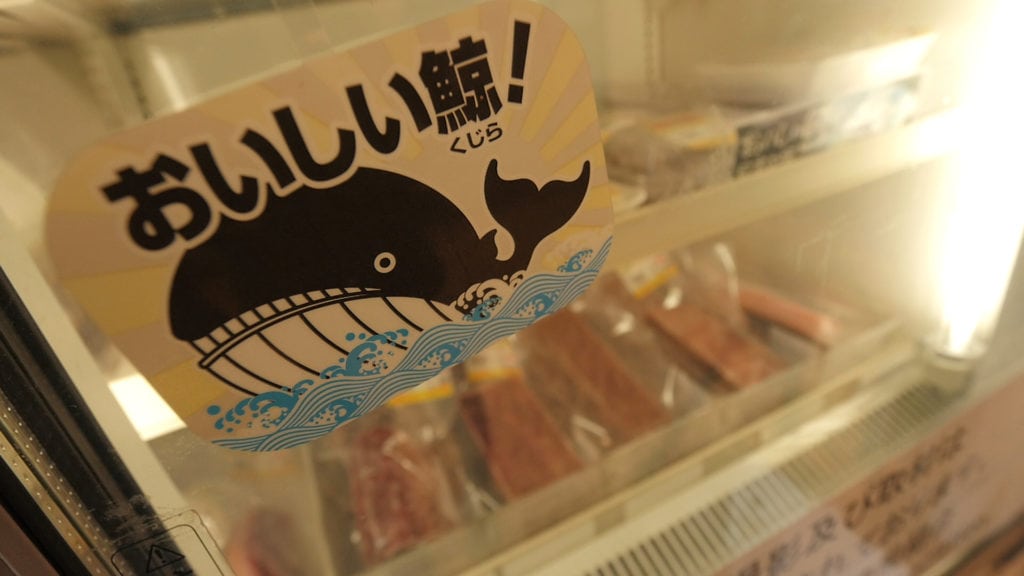In 2010 The Cove won the Academy Award for Best Documentary Feature. It showed in somewhat graphic detail the hunting and capturing of dolphins in Taiji, Japan. It stirred outrage in many viewers that such things could go on. But as is almost always the case, there is another side to this story. A Whale of a Tale from documentarian Megumi Sasaki shows a much different picture of the fishing village of Taiji and the issues around the dolphin hunting that takes place there.
The film looks at the continuing protests taking place in Taiji from a variety of perspectives including local whalers, the town?s mayor, some of the protestors with Sea Shepherd, and (perhaps most informative for a western audience) an American journalist who has lived in Japan for many years.
It should be noted that there is something of a cultural divide when it comes to the idea of dolphins. While many Americans see them as cute and love to see them in dolphin shows (although the protesters in the film object to such practices), for Japanese they have been a source of food for hundreds of years. Early in the film we get a sampling of how some Japanese responded to The Cove: ?Western world Twisted view of Japan?s food culture,? ?No one can tell Japan what it can eat,? and ?It?s wrong for outsiders to come and try to destroy our history and culture. They should leave us alone. They shouldn?t meddle in our culture.? It is of some note that some of those objecting to such western ?meddling? aren?t that fond of dolphin meat, but still believe their culture should be respected.
That is what makes Jay Alabaster such an important person in the film. As an AP journalist in Japan for nearly twenty years, he has both the western view and a deep understanding of Japanese culture. In the wake of The Cove, he moved to Taiji and spent time building trust among the residents there. He gives the film a perspective that is built on the relationships he has with both the fishermen and the protesters.
Whereas The Cove villainizes the fishermen, A Whale of a Tale gives us a very unflattering picture of the protesters. We see them as they verbally accost fishermen in ways that can only be categorized as harassment and bullying. They seem less interested in dialogue and understanding than intimidation. They don?t seem to be interested in any middle ground or compromise. They have a sense of moral superiority, but their actions give us pause in granting that to them.
For those who saw The Cove and perhaps even felt outrage at what that film portrayed as barbarism, A Whale of a Tale could well provide a balancing picture. It is a good reminder that the truth can be shaded in various ways. No doubt the issues involved in these two films need to have both sets of facts and perceptions available for us to consider what may or may not be the proper approach to Japan and whaling.
Photos courtesy of Fine Line Media









